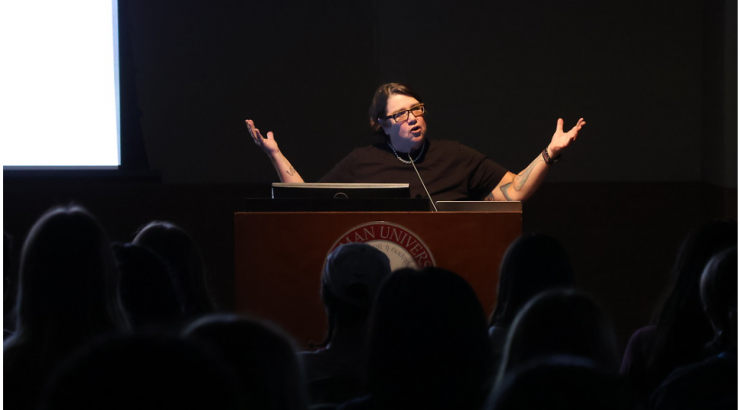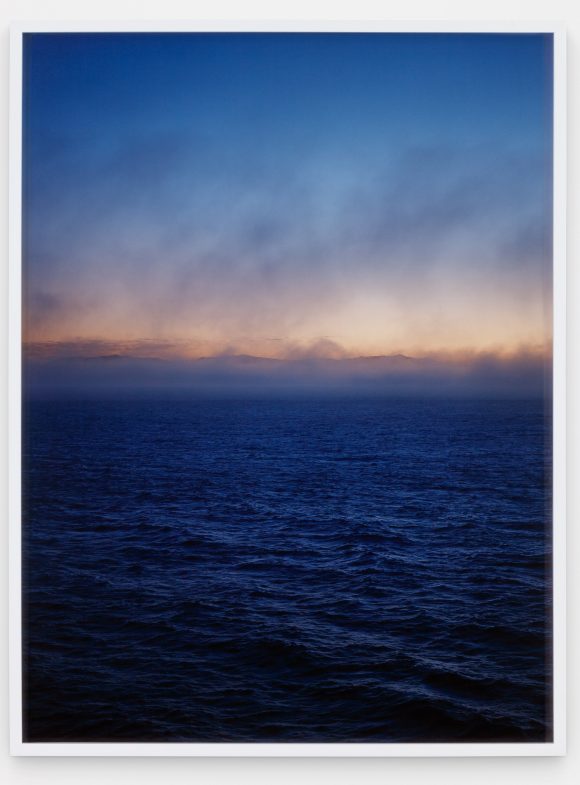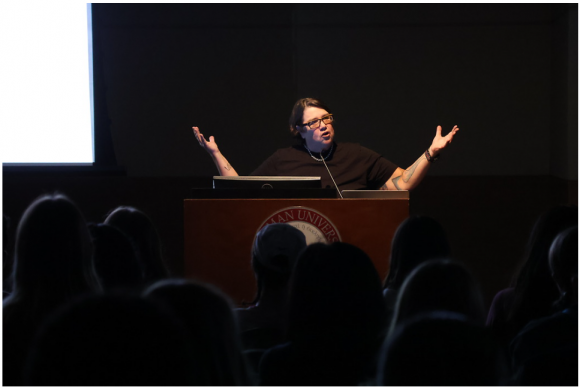
Catherine Opie on Bearing Witness
October 9, 2024
On October 2nd, photographer and educator Catherine Opie took the audience on a journey through her body of work, beginning with the first photograph she took at nine years old through to the present. The event was part of Wilkinson College’s Engaging the World: Leading the Conversation on Gender & Sexuality and was also the Art Department’s Bensussen Guest Lecture, a series founded to bring artists and scholars to campus to help students connect with the art world.
Opie is often described as one of the most important photographers of her generation. Hearing her speak about the breadth of her work, it is easy to understand why. Opie has used photography to both document and witness moments that have shaped the fabric of the United States. For this reason, some say her biggest and most enduring theme has been America itself.
She began her career photographing her friends within the LGBTQ community during the height of the AIDS epidemic. In response to the Reagan administration’s inaction and the homophobia she experienced, Opie created portraits that emphasized the humanity and community amongst queer groups across the United States. These intimate photographs brought visibility to a community and history that had been silenced. Later in her career, she began photographing high school football games and players. This series took on new meaning when she discovered that many of the young men she photographed had been drafted and, in many cases, killed in the War in Afghanistan.
More recently, in 2019, Opie tied the destruction of swamplands in the South with the Trump administration’s rhetoric of “draining the swamp.” These landscapes became the basis for an exploration of a host of intertwined political and environmental issues, including the politics of ecosystems, gun control, white supremacy, and the rapid rise of water globally. In 2020, Opie revisited the South to document monuments commemorating controversial historical figures. She gathered perspectives of families living in the South and their feelings towards these figures, such as Robert E. Lee, or movements such as Black Lives Matter. The result, titled monument/monumental, is a powerful exploration of the United States’ struggle to come to terms with the history and present of racism.

Catherine Opie, Untitled #6 (From Your Shore to My Shore), pigment print, 2009. Purchased with acquisition funds.
Opie’s life-long fascination with landscapes can also be seen in her From Your Shore to My Shore series, one of which is part of the Phyllis and Ross Escalette Permanent Art Collection. This series was taken from a container ship traveling from Korea to Long Beach, CA. During the ten-day journey, Opie took photographs of every sunset and sunrise, playing into stereotypes of the horizon, landscape, and sunrises/sets in photography. The lack of a distinguishing background also creates a sense of universality, in which the horizon becomes a universal thread connecting us all. Untitled #6 (From Your Shore to My Shore) is currently on display in the Campus Center at Rinker.
Whether photographing high school football games, queer bodies, California surfers, the snowy mountainsides, or political monuments, Catherine Opie has shaped what it means to “fit in.” As an art history student at Chapman University, I believe Opie utilizes her talents to educate and call attention to moments in American history that should not be overlooked. Witnessing these conflicts in her life, Opie has become inspirational and has influenced me to view them from different perspectives to understand every side of the story.
We invite you to explore all the works in the Escalette Collection by visiting our eMuseum.
Wilkinson College of Arts, Humanities, and Social Sciences is the proud home of the Phyllis and Ross Escalette Permanent Collection of Art. The Escalette Collection exists to inspire critical thinking, foster interdisciplinary discovery, and strengthen bonds with the community. Beyond its role in curating art in public spaces, the Escalette is a learning laboratory that offers diverse opportunities for student and engagement and research, and involvement with the wider community. The collection is free and open to the public to view.


